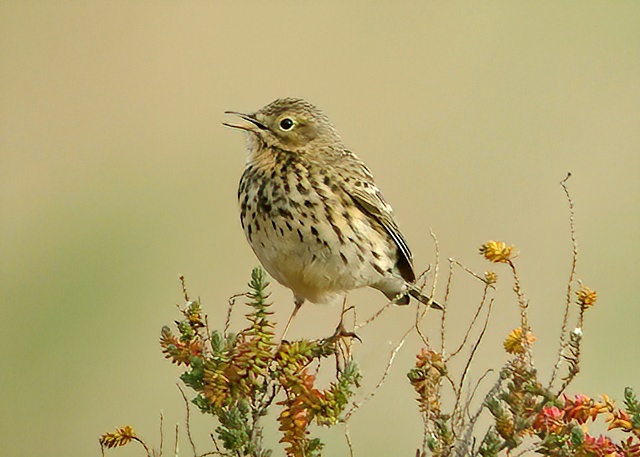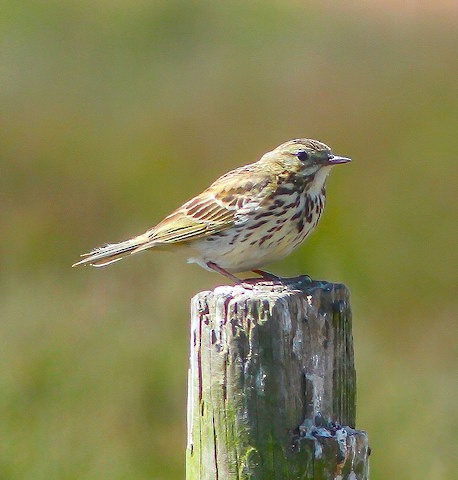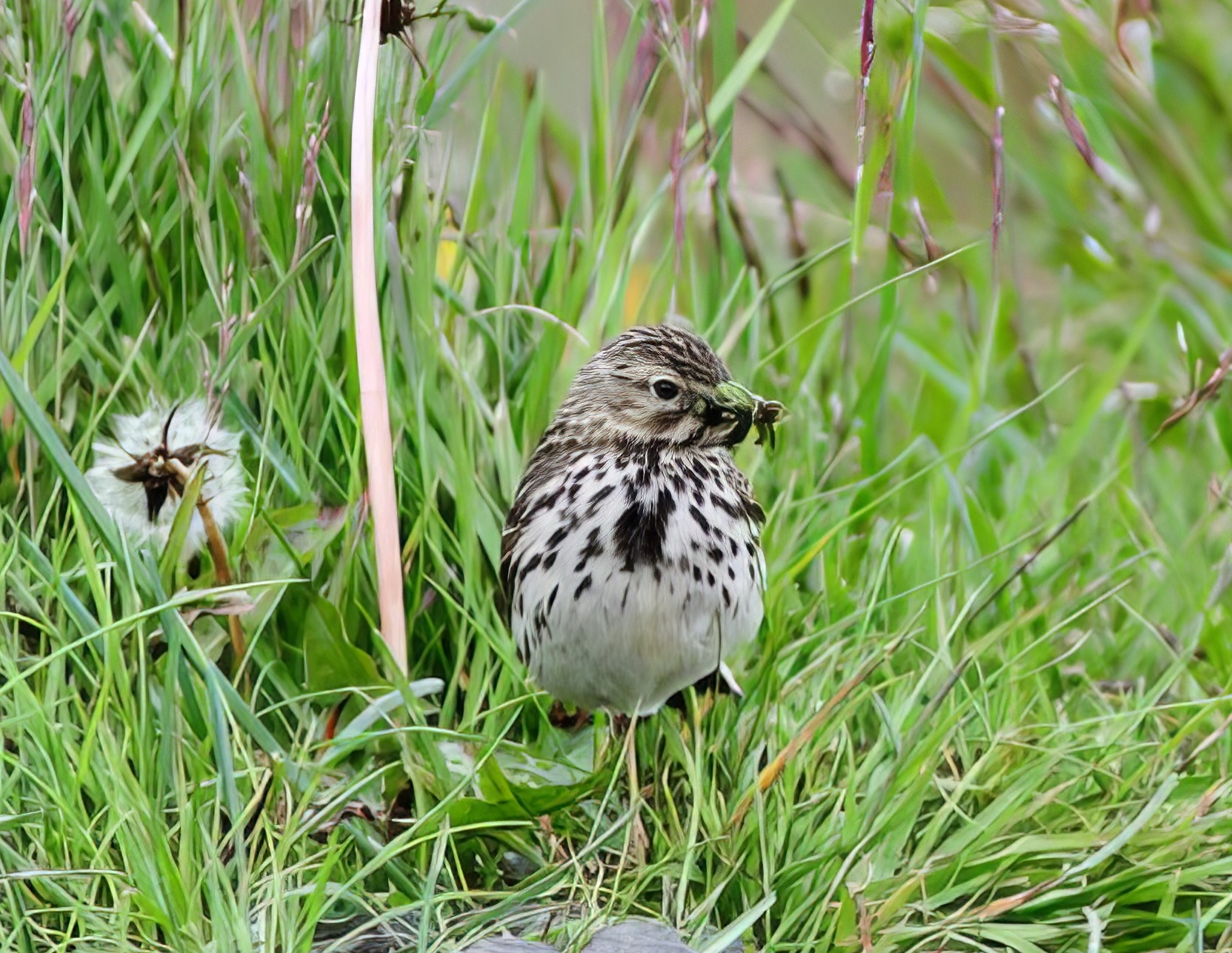Meadow Pipit Anthus pratensis
Common/very common resident, passage migrant and winter visitor.



Meadow Pipit is primarily an upland bird in Britain but a glance at the breeding Relative Abundance map in BTO Atlas 2007-11 shows that in lowland England there is an area of distribution on the English east coast stretching from the southern foothills of the North Yorkshire Moors down to the Fens where Meadow Pipit does well compared to the rest of lowland England. Gaps in the Lincolnshire Atlas of the 1980s, mainly in the Kesteven area, appear to have been filled in by 2007-11. The BBS long term trend for England was down 21% from 1994 to 2019. There is insufficient data to compute a Lincs BBS index but the APEP4 adjusted population in 2016 was 20,000 pairs. Meadow Pipit is much more numerous on migration, especially in autumn, and it has a strong wintering presence too. The biggest day numbers each year come from autumn migration counts at Gibraltar Point Bird Observatory. LBR reports for the five years to 2018 show a range in peak day counts from 2,437 in 2015 to 4,800 on September 11th, 2016 with an average of 3,400. In winter it is found in every 10km square in the county.
BTO ringing data shows that birds ringed in the county, almost all of them in autummn, and subsequently retrapped or recovered abroad have been found in France, Italy, Portugal, Spain and The Netherlands mostly in subsequent autumns.
(Account as per new Birds of Lincolnshire (2021), included December 2022)
